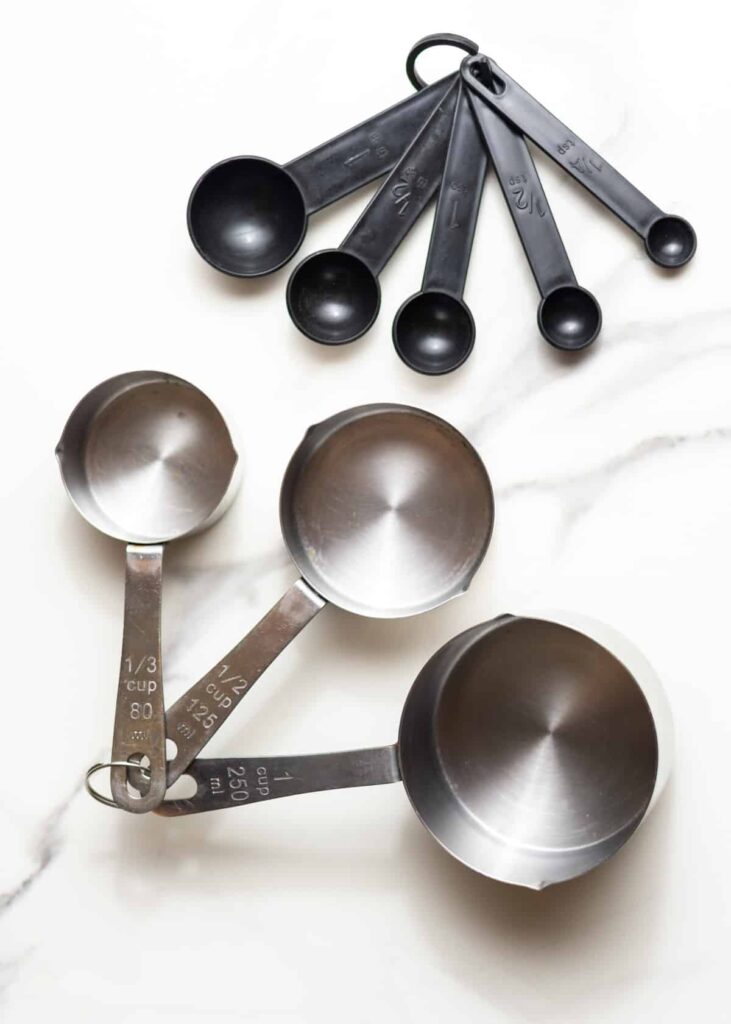Demystifying Measurements: How Many Tablespoons in a Quarter Cup?
Ever stared at a recipe bewildered by the seemingly cryptic world of measurements? You’re not alone. Converting between cups and tablespoons can be a source of confusion, especially when baking or cooking precise dishes. But fear not, for this comprehensive guide will equip you with the knowledge to confidently navigate these culinary conversions.
Understanding Units: Cups vs. Tablespoons
-
Cups: A cup is a unit of volume commonly used in the United States for measuring both dry and liquid ingredients. It’s a standardized measurement, ensuring consistency across recipes. In the US customary system, one cup is equal to 16 fluid ounces.
-
Tablespoons: A tablespoon (abbreviated as tbsp) is a unit of volume smaller than a cup. It’s primarily used for measuring smaller quantities of liquid or dry ingredients, particularly when a precise amount is needed.
The Conversion: 1/4 Cup Equals How Many Tablespoons?
Now, for the answer you’ve been waiting for: there are 4 tablespoons in a quarter cup (1/4 cup). This conversion holds true for both dry and liquid ingredients, as long as you’re using standard US measurements.
Here’s a breakdown to solidify the conversion:
- 1 cup = 16 fluid ounces
- 1/4 cup = (1/4) * 16 fluid ounces = 4 fluid ounces
- Since 1 tablespoon = 1/16 cup (by definition), then 4 fluid ounces (or 1/4 cup) equals 4 tablespoons.
Handy Tip: Remember the mnemonic “Can’t Stop Thinking Because Food is Outstanding” (Cups = 16 Spoons = Tablespoons = Because Food is Outstanding). While a bit silly, it can jog your memory when faced with conversions.
Equivalents and Conversions for Different Quantities
Now that you know 1/4 cup equals 4 tablespoons, let’s explore conversions for other quantities:
- 1/2 cup = 8 tablespoons
- 1/3 cup = 5⅓ tablespoons (or approximately 5.33 tablespoons)
- 1/8 cup = 2 tablespoons
- 3/4 cup = 12 tablespoons
- 1 cup = 16 tablespoons
For conversions beyond these common measurements, you can use a kitchen conversion chart or a handy online conversion tool.
The Importance of Accurate Measurements in Cooking and Baking
Precise measurements are crucial for successful cooking and baking. Using the correct amount of ingredients ensures your recipe achieves the desired consistency, texture, and flavor. Here’s why:
- Consistency: The right amount of liquid ingredients like water or milk determines the batter’s or dough’s consistency. Too much liquid can make a cake soggy, while too little can result in a dry and crumbly texture.
- Texture: Dry ingredients like flour and sugar play a vital role in the texture of baked goods. The correct measurement ensures a fluffy cake, a crisp cookie, or a perfectly risen bread.
- Flavor: The balance of ingredients is essential for achieving the desired flavor profile. Too much sugar can make your dish overly sweet, while insufficient salt might leave it bland.
Beyond the Basics: Factors Affecting Conversions
While the standard conversion is 1/4 cup = 4 tablespoons, there are a few factors to keep in mind for more precise measurements:
- Ingredient Type: Dry ingredients like flour can settle and become compacted over time. To ensure accuracy, fluff the flour before measuring it using a spoon or whisk. Conversely, very fine dry ingredients like powdered sugar may need to be gently patted down in the measuring cup to avoid overfilling.
- Measuring Tools: Invest in a set of standard measuring cups and spoons. Ensure they are clearly marked and undamaged for accurate measurements.
- Liquid vs. Dry Ingredients: Use liquid measuring cups for measuring liquids and dry measuring cups for dry ingredients. This is because liquids conform to the shape of the container, while dry ingredients have air pockets that can affect volume.
Frequently Asked Questions (FAQ)
1. Can I use a kitchen scale instead of measuring cups and spoons?
Absolutely! Kitchen scales offer a more precise way to measure ingredients, especially for baking. They eliminate the potential discrepancies caused by packing or scooping techniques.
2. What if my recipe calls for a different measurement system?
Recipes from other countries may use metric units like grams or milliliters (ml). In such cases, you’ll need a conversion chart or online tool to convert.
Advanced Conversions and Techniques
While the basic conversions are helpful, there might be situations where you need to go beyond the standard measurements. Here’s how to tackle those:
- Fractional Amounts: Recipes often call for fractional amounts of cups, like ¾ cup or ⅔ cup. Here’s how to convert these:
- ¾ cup = (3/4) * 16 tablespoons = 12 tablespoons
- ⅔ cup = (2/3) * 16 tablespoons = 10⅔ tablespoons (or approximately 10.67 tablespoons)
- Double or Triple a Recipe: Need to adjust a recipe for a larger batch? Simply double or triple each ingredient amount, including the cup and tablespoon conversions.
- Scaling Down a Recipe: Scaling down a recipe requires a bit more attention. While you can halve or third the cup measurements, converting tablespoons to teaspoons (tsp) might be necessary for smaller quantities. Remember, 1 tablespoon = 3 teaspoons.
Mastering Measurement Techniques:
- Scooping Technique: When measuring dry ingredients, use the “spoon and sweep” method. Fill a spoon above the rim, then use a knife to sweep across the top, creating a level surface. Don’t pack the ingredient into the cup.
- Liquids: For liquids, pour directly into the measuring cup until the desired level is reached. Read the measurement at eye level to avoid parallax error (where the measurement appears different depending on the angle you look at it).
Beyond the Standard Conversions:
The world of culinary measurements extends beyond cups and tablespoons. Here’s a quick reference for some common conversions:
- 1 teaspoon (tsp) = 1/3 tablespoon (tbsp)
- 1 ounce (oz) = 2 tablespoons (liquid) = ¼ cup (dry)
- 1 stick of butter = ½ cup (16 tablespoons)
Remember: When in doubt, consult a reliable conversion chart or online tool. There are also handy kitchen conversion calculators available that can help you convert between various units of measurement.
Troubleshooting Common Measurement Issues
Even with newfound knowledge, measurement mishaps can happen. Here’s how to address some common problems:
- Added Too Much of an Ingredient: If you accidentally added too much of a dry ingredient, like flour, you can try adding a small amount of additional liquid, one tablespoon at a time, until the desired consistency is achieved. However, be cautious, as adding too much liquid can also negatively impact the recipe.
- Used the Wrong Measuring Tool: Did you accidentally use a dry measuring cup for a liquid ingredient? The best course of action depends on the ingredient and the amount used. For small quantities, you might be able to estimate and adjust accordingly. For larger discrepancies, it might be best to start over with the correct measurement.
Conclusion
With a little practice and the knowledge gained from this guide, you’ll be a master of culinary conversions in no time. Remember, precise measurements are key to achieving delicious results in the kitchen. So, grab your measuring cups and spoons, embrace the conversions, and get ready to bake or cook with confidence!



